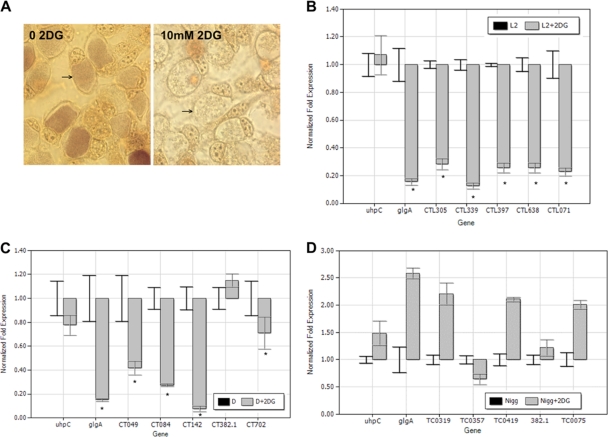FIG. 8.
2DG-treated C. trachomatis does not accumulate glycogen within inclusions or downregulate PRCL transcription. (A) L929 cells infected with C. trachomatis L2/434/Bu were supplemented with 0.45 mg ml−1 glucose and treated with 2DG as indicated. The cells were fixed and stained with iodine at ∼40 h postinfection and photographed at 1,000× magnification. Arrows indicate chlamydial inclusions. (B to D) Plasmid-responsive gene transcription was differentially transcribed by C. trachomatis L2/434/Bu and D/UW-3/Cx (B and C) but not C. muridarum (D) in response to treatment with 10 mM 2DG. Total RNA was isolated from infected cells 24 h after infection, and PRCL transcripts were measured by quantitative RT-PCR. Transcription of uhpC, the gene encoding the chlamydial hexose phosphate transporter, was unaltered in response to 2DG treatment and served as a control. The transcriptional differences are presented as the fold change in expression for each gene in a single representative experiment, although each experiment was performed independently at least twice and samples were assayed in triplicate. *, P ≤ 0.005 (L2 versus L2 + 2DG) or P ≤ 0.016 (D/UW-3/Cx versus D/UW-3/Cx + 2DG). Values obtained for C. muridarum Nigg transcripts treated with 2DG did not differ significantly from the untreated control.

